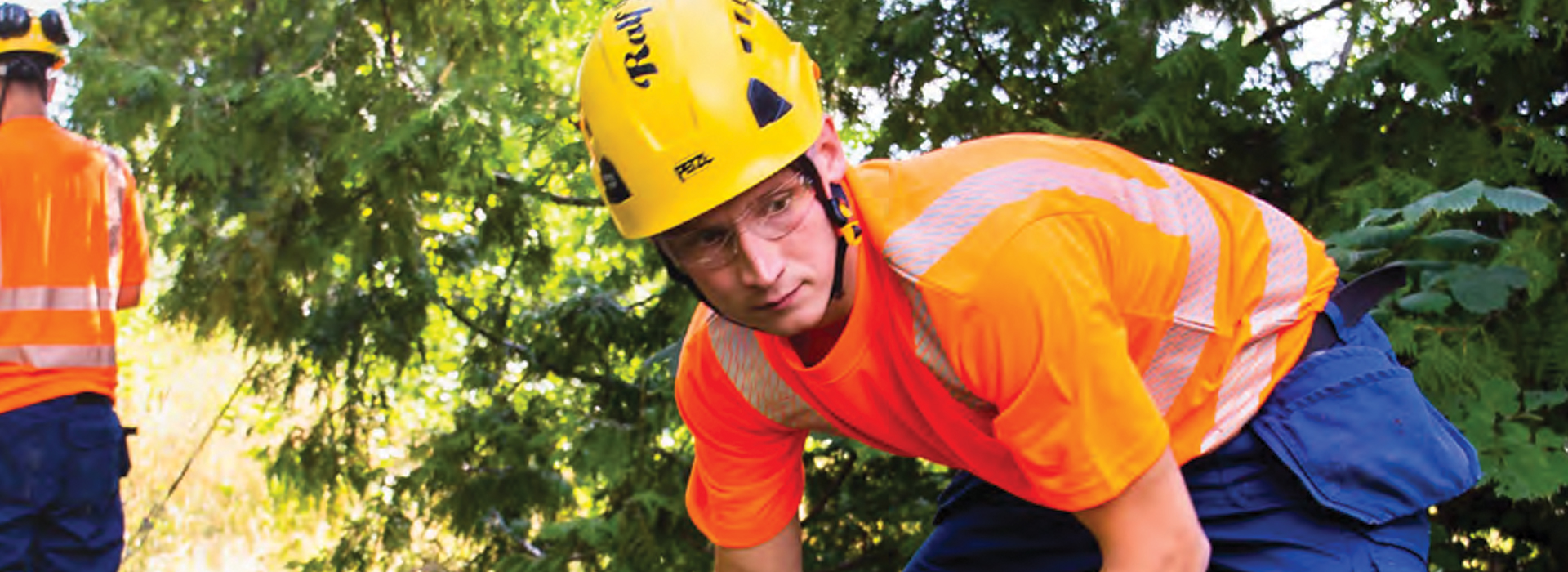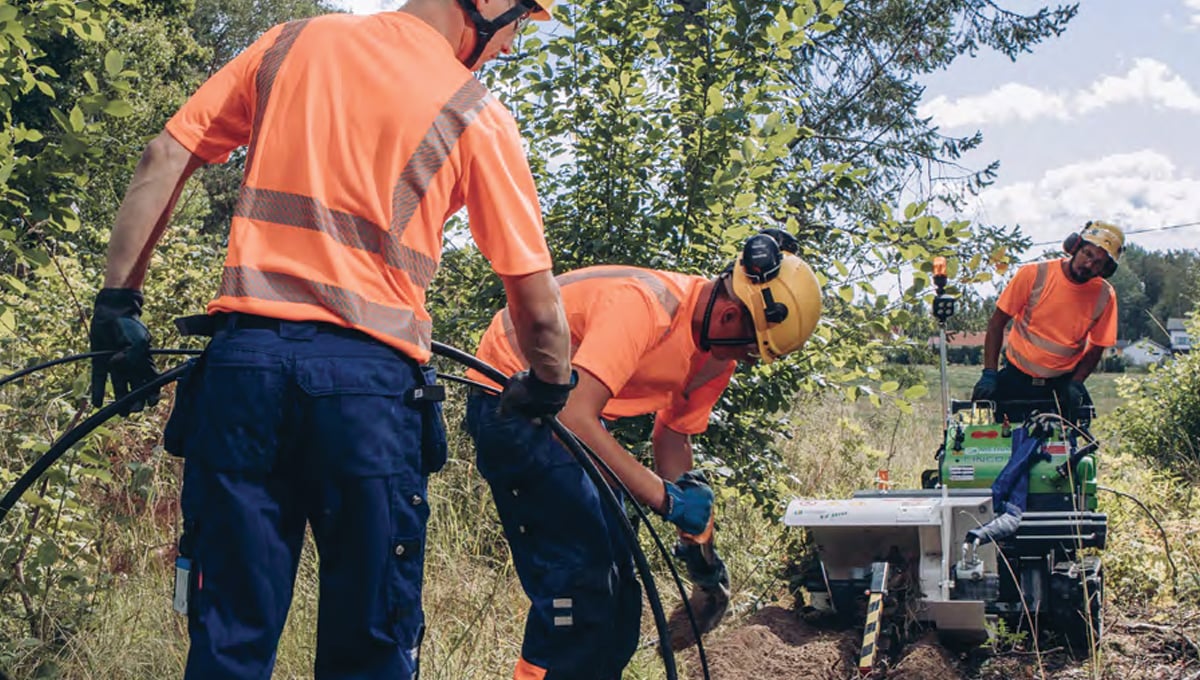Caruna
When safety is just one of many things, the accident rate remains high and the quality of work suffers. At Caruna, safety was made a top priority by adopting the dss+ approach. While a lot still remains to be done, the results are already impressive.

From necessary evil to top priority – Caruna's safety culture improved through coaching
The starting point was nothing unusual in the Finnish industrial sector: At Caruna, the level of occupational safety was “adequate,” managed mostly by responding to what had happened. At the same time, the quality of work suffered and the level of performance in construction left room for improvement. Caruna wanted to change this. “Although the necessary elements of safety management were in place, safety was just one issue among others. Now it was highlighted. We realised that instead of just responding and reacting to isolated incidents, we needed to change our way of thinking,” says Kosti Rautiainen, Head of Electrical Network at Caruna.
The challenge was tackled by partnering with dss+. From the very beginning, the idea was that dss+ would put together a toolkit for Caruna to make it possible for the personnel to take the project forward on their own. “The safety culture at Caruna was typical of a new company. Much had already been done and progress had been made, but it was not enough. However, Caruna was eager and willing to tackle the issue, which provided a sound basis for change,” says Sami Karvinen, Head of Nordic Account Management at dss+, who led the transformation of Caruna’s safety culture from the beginning.
The safety culture at Caruna was typical of a new company. Much had already been done and progress had been made, but it was not enough.”
SAMI KARVINEN, HEAD OF NORDIC ACCOUNT MANAGEMENT, dss+
Contractors in a key role
Caruna’s safety culture project was launched in 2018. First, dss+ sent out questionnaires and conducted site tours to determine the then-current situation. As Caruna has outsourced all fieldwork to external contractors, their views were also taken into account. The management and owners were also involved from the outset.
As a result of the initial survey, a decision was made to focus on occupational safety among contractors and subcontractors in the field where the risk of accidents was the highest. A road map drawn up together plotted the path to be followed.
"Instead of trying to revamp all the operations at once, it’s more advisable to focus our energy on a few key issues. This ensures a better outcome." Karvinen says. A decision was made to target situations in which Caruna worked with the contractors. Indicators were put in place and goals defined to implement the change.
"Meetings with the contractors and on-site safety walks were chosen as the most natural ways to influence employees. We continue to sit down with the contractors to address these issues on a regular basis," says Arsi Näkki, Head of HSEQ at Caruna.

Safety awareness increased through coaching
Coaching was selected as the preferred tool for achieving the objectives. Eight Caruna employees were appointed safety coaches who were instructed by experts from dss+ in the new ways of working and how to coach others. They, in turn, trained 40 other Caruna employees, who chaired meetings and conducted site tours. Petri Kaerla, a project manager who participated in coaching, finds it an effective way of working.
"I got a lot of first-hand advice on how to handle meetings and safety walks. Meetings are now prepared more effectively than in the past, more information is shared and contractors are involved in the process more closely. While HSEQ issues were taken up at the meetings earlier, now we address the root causes in greater detail. On safety walks, generic form filling has been replaced by interaction and observation," Kaerla says.
The new approach has taken some effort on the part of the coaches and trainees as well as contractors. Kaerla points out that active efforts are called for to maintain momentum.
You always start with a new phase with each contractor. While the underlying mode of operation is the same, its application varies according to the project and participants. Once the way of working is established, each participant makes his or her own contribution to the process and the work proceeds under its own steam."
A new mindset
The project launched in 2018 is well on its way but still requires sustained efforts. The coaches have learned their lesson and passed it on to the trainees. More trainees will be selected after the pilot phase.
The effects of the new approach are already visible. The accident rate has fallen from 8 to 4,1 per million hours worked, which is an excellent achievement. At the same time, the standard of quality of work has improved and new thinking has gained ground. The results are also evident at contractor meetings. For this purpose, Caruna and dss+ developed an appraisal model for assessing safety performance on a scale of 0–30. Before the project was launched, the activities only scored four to six points, but six months later the average score had reached twelve.
According to Sami Karvinen, the key to success was new thinking.
"Today, people at Caruna have a different approach to safety and talk about it because it is important, not because it is something you have to do. It makes a world of difference as far as the final outcome is concerned," Karvinen says.
As a result of the road map and growing interest in safety, employees are coming up with an increasing number of ideas and initiatives. This takes a tangible form especially when quick decisions are called for.
"For example, during a storm, teams sent out to remove trees that had fallen onto the power lines were duly reminded that the work was to be carried out safely. As a result, some of them stopped working to wait for the wind to drop. In other words, they made an independent decision to put safety first. Now, they feel justified to ask for more time or equipment to do the work safely," Rautiainen says.
"The learning curve has been impressive. Ad hoc measures have been replaced by a systematic approach to safety. Previously, safety did not play the key role it does now."
KOSTI RAUTIAINEN, HEAD OF ELECTRICAL NETWORK, CARUNA